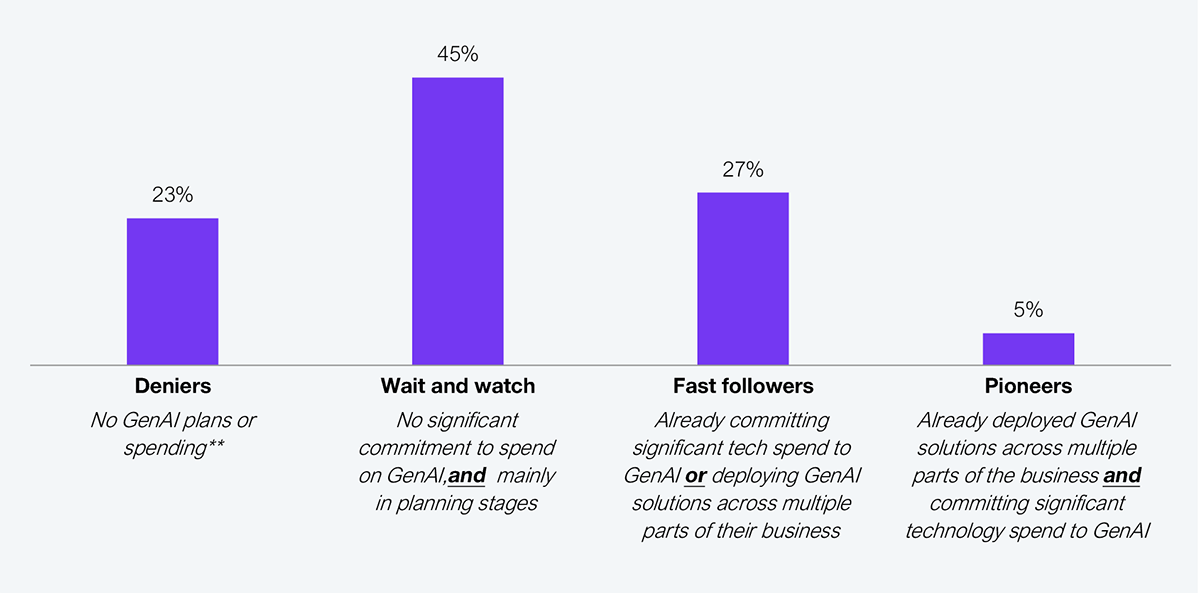Enterprise leaders face a stark reality as they enter 2025: while AI’s potential is no longer in question, their ability to capture its value absolutely is. Despite plans to double AI investments this year, organizations remain trapped in an endless cycle of proofs-of-concept and pilots that never scale.
The challenge isn’t a lack of technology or investment—it’s the fundamental disconnect between how enterprises are organized to work and what scaling AI requires. Traditional silos between business and technology teams, difficulties in identifying valuable use cases beyond the obvious, and the lack of mature frameworks for managing AI operations at scale have created a perfect storm that keeps organizations stuck in place while their AI ambitions race ahead.
This is the critical gap that Genpact’s AI Gigafactory aims to address. Rather than treating AI implementation as yet another IT project, Genpact has reimagined how enterprises must approach AI adoption—bringing together process and data expertise, industry knowledge, and technical capabilities in an integrated model designed specifically for scale.
Our research shows that only 5% of enterprises have successfully deployed tools such as generative AI across their organizations, while the vast majority remain trapped in endless pilots and proofs of concept (see Exhibit 1).
This widespread struggle to move beyond the exploratory stage stems from three interconnected challenges. First, organizations find it difficult to systematically identify valuable use cases beyond obvious applications. Second, traditional organizational silos create barriers between business, data, and technology teams, making it nearly impossible to scale successful pilots beyond their original departments. Third, most enterprises lack the infrastructure and expertise needed to manage data and multiple AI models at scale.

Sample: 666 executives
Source: HFS Research in collaboration with Genpact, 2024
**Deniers include respondents excluded from the study due to having no GenAl initiatives or plans.
Q. What best describes the status of GenAl solutions deployment?
Q. What percentage of your organization’s technology budget is dedicated to GenAl initiatives?
At its core, the AI Gigafactory operates as an integrated system that brings together business process expertise and technical capabilities, breaking down the traditional silos that often slow AI implementation.
The Gigafactory’s operations revolve around three main components working in harmony to address each scaling challenge. First, there’s the Value Architecture layer, where industry-specialized experts collaborate with clients to map out their AI journey. These experts engage in workshops to identify promising use cases, create custom implementation roadmaps, and co-develop solutions that align with specific business needs. This ensures that AI initiatives are grounded in real business value from the start.
The second critical component is the unique pod-based delivery structure, which serves as the Gigafactory’s engine room. Each pod operates as a cross-functional team that combines industry experts, process specialists, AI engineers, data engineers, and integration architects. These pods are organized by industry specialization, such as manufacturing, retail, or pharma, ensuring deep domain expertise in every implementation. Supporting these pods is a shared layer of common functions, such as DevOps and testing, which helps maintain efficiency and consistency across projects.
The third component is a comprehensive solution framework that includes:
Early results show promising traction: A major industrial conglomerate is modernizing its data platforms through the Gigafactory, a leading sportswear company is transforming its ERP systems, and multiple enterprises are scaling AI with more than 200 models in production. Notably, Genpact has moved beyond traditional FTE pricing to outcome-based models, offering pod-based pricing for mature clients and transaction-based pricing for transformations.
While ambitious, this shift positions Genpact to capitalize on enterprises’ urgent need to move from isolated pilots to scaled AI implementation. The true test will be whether this factory model can consistently deliver the speed and value enterprises desperately need.
As enterprises struggle to scale AI while advancements accelerate, organizations need systematic frameworks to bridge the gap between AI potential and real business impact. Genpact’s Gigafactory provides a potential approach to address these scaling challenges. However, the success of its pod-based model will depend on how effectively enterprises can integrate it into their existing operating structures.
Register now for immediate access of HFS' research, data and forward looking trends.
Get StartedIf you don't have an account, Register here |
Register now for immediate access of HFS' research, data and forward looking trends.
Get Started